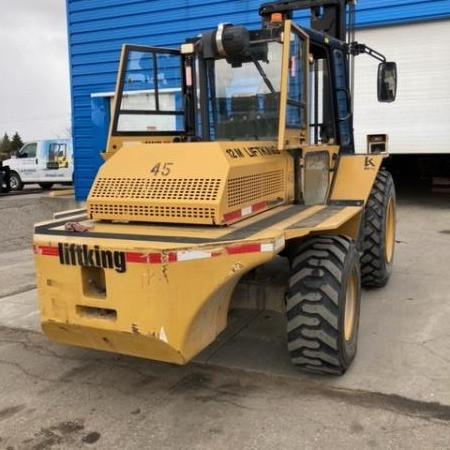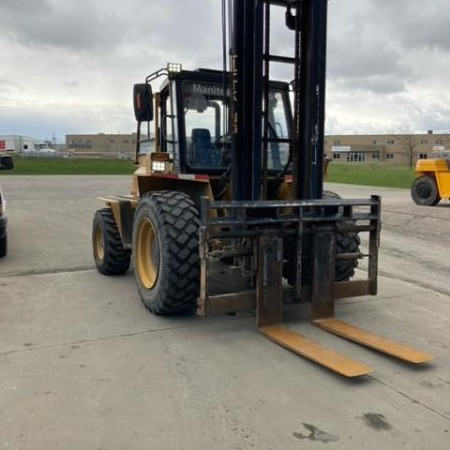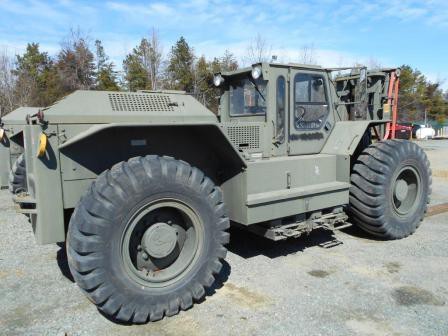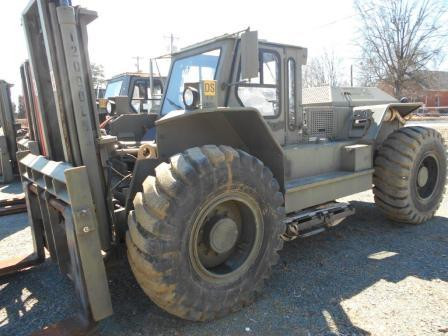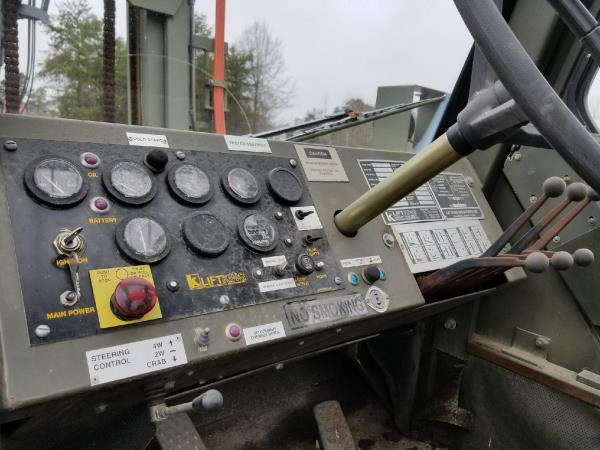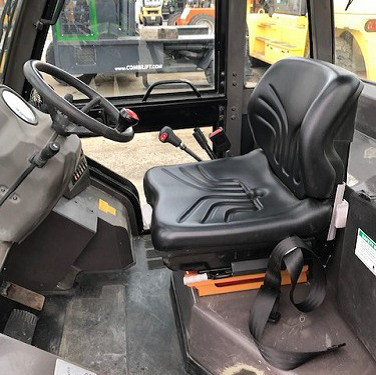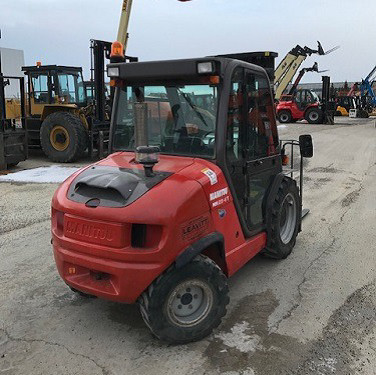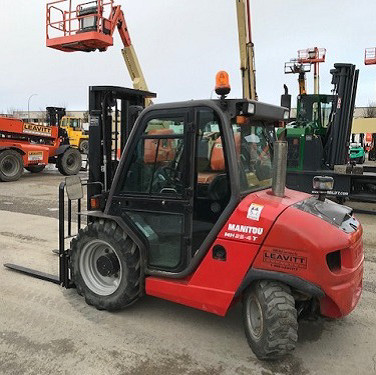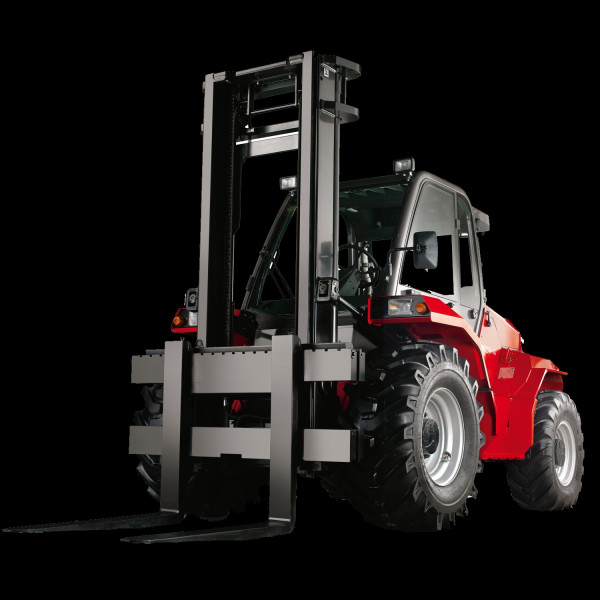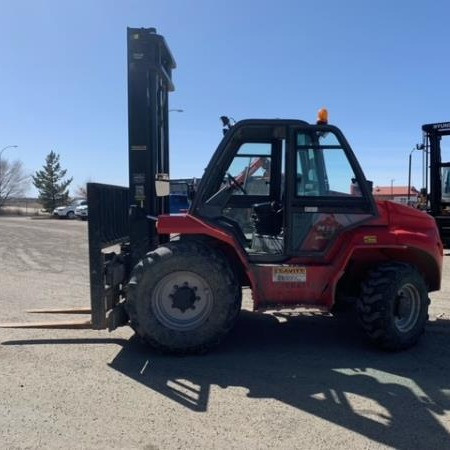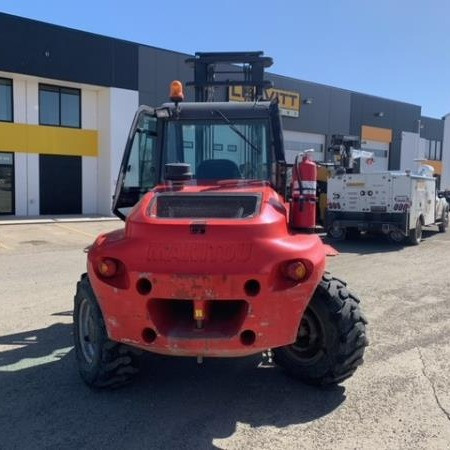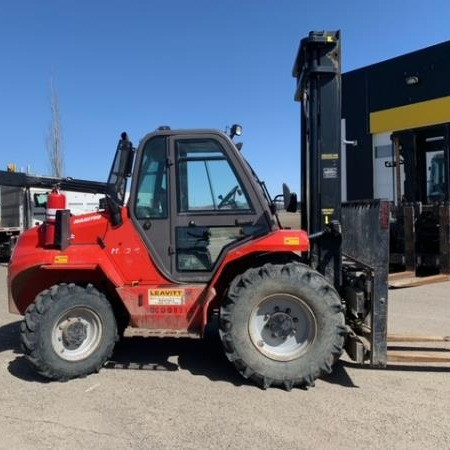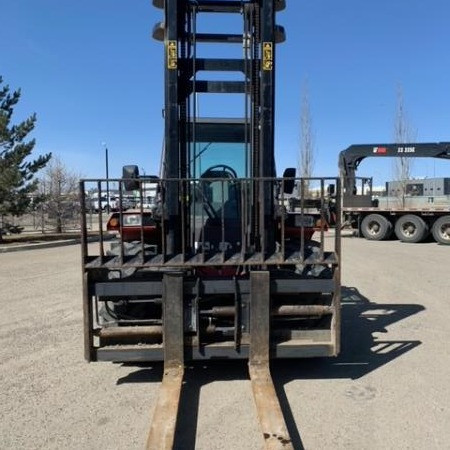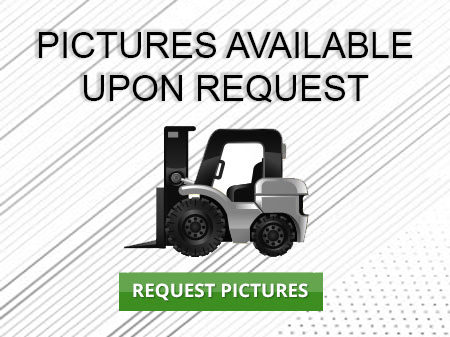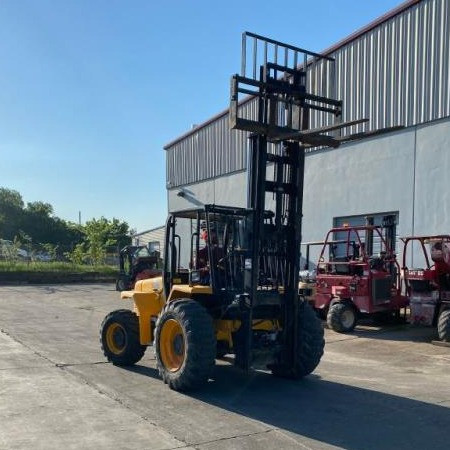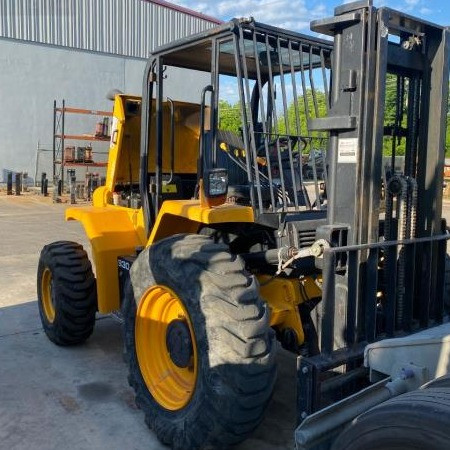Rough Terrain Forklift Riverside
Used Rough Terrain Forklift Riverside - Forklift trucks utilize two forks to transport pallets and load and unload cargo. The rough terrain forklift and the industrial forklift are the two main types of forklift trucks.
The first category of forklifts, industrial forklifts, are mostly used in warehouses and at loading docks on surfaces that are relatively smooth and level. Rough terrain forklifts are better suited for rocky environments and uneven surfaces. Rough terrain forklifts are often seen at construction sites and outdoors. They have the weight capacity, size and tires to handle heavy loads. The tire type is one of the key differences between rough terrain and industrial forklift units. Common road tires, cushion tires are the main kind found on industrial forklifts. Pneumatic tires are utilized by rough terrain models. They are similar to tractor tires that offer more traction and flotation. Industrial forklifts are commonly powered by internal combustion engines although a fuel cell or battery electrical source may be used. Internal combustion engines are mainly used by rough terrain units.
Types of Class 7 Rough Terrain Forklift Trucks
There are three main types of Class 7 Rough Terrain Forklift Trucks:
1. Straight mast forklifts;
2. Telehandler forklifts; and
3. Rotating telehandler forklifts.
Rough terrain forklifts function well in treacherous locations that are often found in construction sites and military settings. A rough terrain forklift also offers increased maneuverability and performance. Safety considerations are taken into account for rough terrain locations with raising loads in difficult environments to keep the operator safe from tipping over. The machine needs to remain in a stable position prior to lowering, lifting or moving any items. Stability of ground and knowledge of proper lifting technique is essential for safe operation of rough terrain forklifts.
Straight Mast Forklifts
Designed to facilitate safe transport along difficult terrain such as demolition sites and construction locations, straight mast forklifts can complete the job safely and efficiently. Pneumatic cushion tires allow this forklift better maneuverability and accessibility around difficult terrain. These allow the forklift truck to easily travel over rough terrain on the worksite. It is common for straight mast forklifts to come with 2-wheel or 4-wheel drive. The majority of straight mast forklifts rely on propane or diesel fuel to equip them for interior short-term jobs. However, these machines are best suited for outside jobs. The lift capacities of straight mast forklifts are similar to most standard forklifts with a range of approximately 5,000 to 36,000 pounds.
Telehandler or Telescopic Handler Forklifts
The distinct telescoping boom on telehandlers and telescopic handler forklifts contribute to the unit’s name. This telescoping boom allows the forklift truck to pick up and place loads at various distances and lift heights in front of the machine. The operator can achieve enhanced flexibility with better reach during load placement.
Featuring two wheels found at the front and two wheels at the rear, the standard telehandler is a long and low machine. Mounted at the back of the forklift, the telescopic boom is on a pivot that is located many feet above the forklift frame. The left side of the machine houses the cab and the hydraulic fluid tank and the fuel tank are found opposite to the cab. The forklift engine and transmission are situated along the center of the machine. This common configuration allows for a balanced forklift which is necessary for the basic stability of the machine which lifting, transporting and lowering loads.
Compared to standard forklifts, telehandlers deliver higher lift heights. Otherwise known as high-reach telehandlers or compact telehandlers, these models perform. Compact telehandlers can extend their full load capacity from eight-teen feet and the high-reach models to fifty-six feet. The load capacities of these machines range from five thousand pounds to twelve thousand pounds.
All-terrain forklifts often include all-wheel steering which allows for greater maneuverability. This, along with power shift transmission and other steering features, means that the operator can move the lift in as close proximity to the work area as possible.
Recent telehandler units showcase top-of-the-line ergonomic design to generate increased comfort and operator satisfaction. Spacious cabs and tilted steering are some of the items redesigned for the ultimate comfort and productive features. High in demand at job sites, these ergonomic options reduce operator fatigue and repetitive stress injuries.
The majority of telehandler forklifts are operated by a single joystick. The joystick is responsible for the hydraulic system and the boom operations.
These machines can use non-marking tires to allow them to be suitable for maintenance in stadiums and on buildings or billboards and sign operations.
Rotating Telehandler or Roto Telescopic Handler Forklifts
Roto telescopic handler forklifts or rotating telehandlers have numerous items in common with the standard telehandler model. These include the rotating telehandler’s ability to lift heavy weight to great heights. However, these forklifts have the added ability to rotate the forklift on a turntable. Rotating the forklift a complete three-hundred-and-sixty degrees creates a larger working location without the need of repositioning the forklift.
Because of this additional feature, rotating telehandlers often have a second joystick to allow operation of the rotation function apart from the lift function. Useful additional features may be added to your standard telehandler or rotating telehandler including 4WD, increased traction via minimized slip differential on the rear axle, and power-assist steering.
With the added rotating ability of these forklifts, comes additional safety considerations. Because of this, rotating telehandler rough terrain forklifts come with stabilizers to increase the safety when rotating loads from one side of the forklift to the other. Some rotating telehandlers do not have stabilizers. These units are created to move and work in various aspects of the job site and are easier to reposition without stabilizers.
Rotator telehandlers are usually smaller than their fixed cab counterparts, the standard telehandler. Because of this, their load capacities are also smaller than the standard telehandler. Load capacities for rotating telehandlers usually range between 4,000 and 10,000 pounds, with lift heights ranging from 15 to 80 feet.
Winch attachments can transform rotator telehandlers and standard models into a crane. These units can enable job sites that require a crane to get the job done without having to rent and transport a separate machine.
Advancements for Rough Terrain Forklifts
Many attachments are currently available for rough terrain forklifts, such as booms, winches, rotating fork carriages and articulating booms. Forklift attachments are vital for diversifying the machine. They will continue to be developed for years to come.
Most of the proposed advancements will consist of included safety features within the rough terrain forklifts. The latest safety upgrades include automatic load restriction and other features. This system weighs a load automatically and then calculates the safe reach distance of the load while considering the extension and boom angle. If the safe reach distance is reached, an alarm will sound, warning the operator to make the proper adjustments to either the boom angle, the reach distance or load weight.
Rough Terrain Forklift PDF
Stock Number: 209058 GL
Make: LIFTKING
Model: LK12M42
Year: 2015
| Stock Number |
209058 GL |
| Make |
LIFTKING |
| Model |
LK12M42 |
| Year |
2015 |
| Category |
Rough Terrain Forklift |
Stock Number: 267846 GL
Make: Liftking
Model: LK12000
Year: 2003
| Stock Number |
267846 GL |
| Make |
Liftking |
| Model |
LK12000 |
| Year |
2003 |
| Category |
Rough Terrain Forklift |
Stock Number: DP-MAN008 GL
Make: MANITOU
Model: MH25-4T
Year: 2016
| Stock Number |
DP-MAN008 GL |
| Make |
MANITOU |
| Model |
MH25-4T |
| Year |
2016 |
| Category |
Rough Terrain Forklift |
Stock Number: EQC008213 GL
Make: MANITOU
Model: M50
Year: 2017
| Stock Number |
EQC008213 GL |
| Make |
MANITOU |
| Model |
M50 |
| Year |
2017 |
| Category |
Rough Terrain Forklift |
Stock Number: 208325 GL
Make: MANITOU
Model: M50.4
Year: 2015
| Stock Number |
208325 GL |
| Make |
MANITOU |
| Model |
M50.4 |
| Year |
2015 |
| Category |
Rough Terrain Forklift |
Stock Number: LS15257 GL
Make: JCB
Model: 930
Year: 2013
| Stock Number |
LS15257 GL |
| Make |
JCB |
| Model |
930 |
| Year |
2013 |
| Category |
Rough Terrain Forklift |


